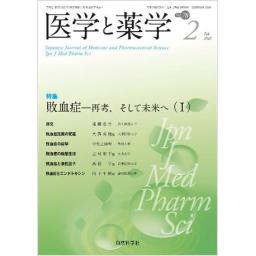1) Geroulanos S, Douka ET : Historical perspective of the word "sepsis". Intensive Care Med 32 (12) : 2077, 2006.
2) Budelmann G : Hugo Schottmuller, 1867-1936. The problem of sepsis. Internist (Berl) 10 (3) : 92-101, 1969.
3) Bone RC, Balk RA, Cerra FB, et al : Definitions for sepsis and organ failure and guidelines for the use of innovative therapies in sepsis. The ACCP/SCCM Consensus Conference Committee. American College of Chest Physicians/Society of Critical Care Medicine. Chest 101 (6) : 1644-1655, 1992
4) Abraham E, Matthay MA, Dinarello CA, et al : Consensus conference definitions for sepsis, septic shock, acute lung injury, and acute respiratory distress syndrome : time for a reevaluation. Crit Care Med 28 (1) : 232-235, 2000.
5) Levy MM, Fink MP, Marshall JC, et al : 2001 SCCM/ESICM/ACCP/ATS/SIS International Sepsis Definitions Conference. Crit Care Med 31 (4) : 1250-1256, 2003.
6) Jean-Louis Vincent, Steven M Opal, John C Marshall, et al : Sepsis definitions : time for change. Lancet 381 (9868) : 774-775, 2013.
7) Huifang Zhao, Stephen O Heard, Marie T Mullen, et al : An evaluation of the diagnostic accuracy of the 1991 American College of Chest Physicians/Society of Critical Care Medicine and the 2001 Society of Critical Care Medicine/European Society of Intensive Care Medicine/American College of Chest Physicians/American Thoracic Society/Surgical Infection Society sepsis definition. Crit Care Med 40 (6) : 1700-1706, 2012.
8) Singer M, Deutschman CS, Seymour CW, et al : The Third International Consensus Definitions for Sepsis and Septic Shock (Sepsis-3). JAMA 315 (8) : 801-810, 2016.
9) JL Vincent, R Moreno, J Takala, et al : The SOFA (Sepsis-related Organ Failure Assessment) score to describe organ dysfunction/failure. On behalf of the Working Group on Sepsis-Related Problems of the European Society of Intensive Care Medicine. Intensive Care Med 22 (7) : 707-710, 1996.
10) Ferreira FL, Bota DP, Bross A, et al : Serial evaluation of the SOFA score to predict outcome in critically ill patients. JAMA 286 (14) : 1754-1758, 2001.
11) Seymour CW, Liu VX, Iwashyna TJ, et al : Assessment of Clinical Criteria for Sepsis : For the Third International Consensus Definitions for Sepsis and Septic Shock (Sepsis-3). JAMA 315 (8) : 762-774, 2016.
12) Raith EP, Udy AA, Bailey M, et al : Prognostic Accuracy of the SOFA Score, SIRS Criteria, and qSOFA Score for In-Hospital Mortality Among Adults With Suspected Infection Admitted to the Intensive Care Unit. JAMA 317 (3) : 290 -300, 2017
13) E Abraham : New Definitions for Sepsis and Septic Shock : Continuing Evolution but With Much Still to Be Done. JAMA 315 (8) : 757-759, 2016.
14) Simpson SQ : New Sepsis Criteria : A Change We Should Not Make. Chest 149 (5) : 1117-1118, 2016.
15) Reith FC, Brennan PM, Maas AI, et al : Lack of Standardization in the Use of the Glasgow Coma Scale : Results of International Surveys. J Neurotrauma 33 (1) : 89 -94, 2016.
